Known as the foie gras of the sea, Ankimo is steamed monkfish liver that‘s considered a delicacy in Japan. It’s easy to make this restaurant-quality appetizer at home with packaged ankimo from the Japanese grocery store.
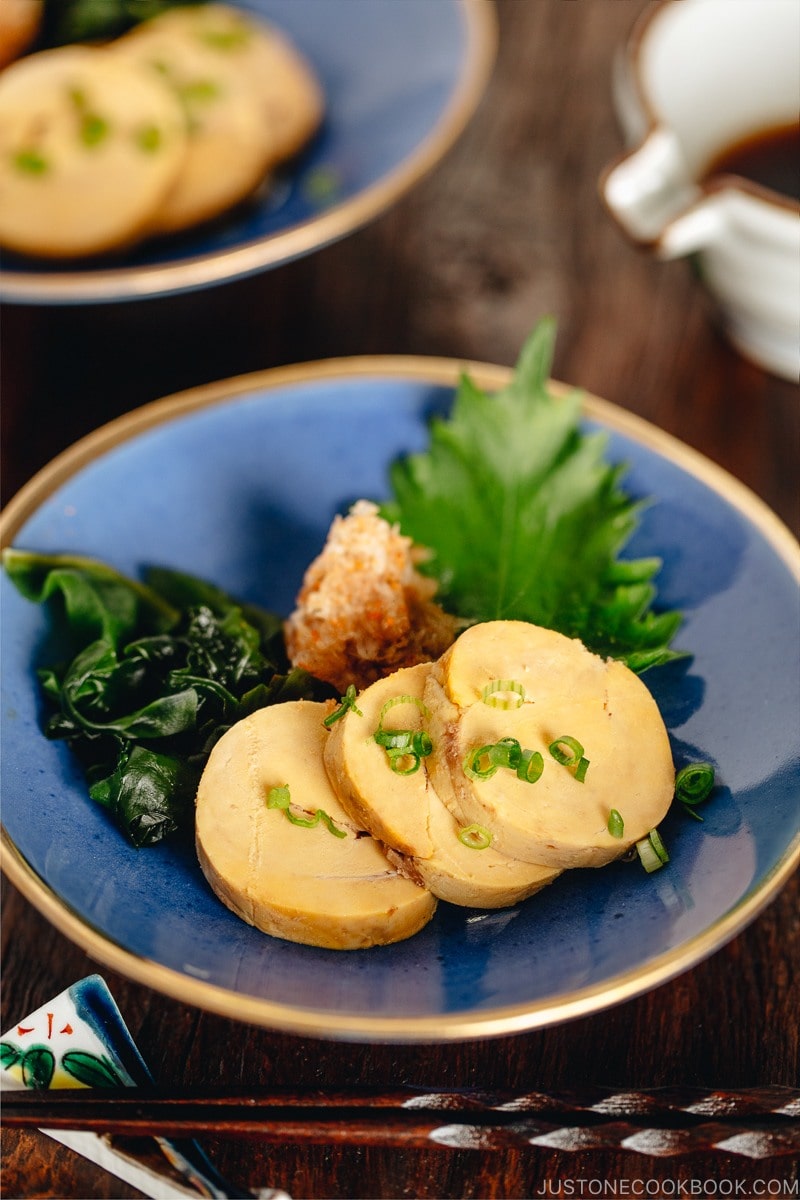
What is Ankimo?
Ankimo (あん肝) is a Japanese dish made with monkfish (anko 鮟鱇) liver (kimo 肝). It is known as the foie gras of the sea and is considered a delicacy in Japan.
You can find ankimo being served as an appetizer at higher-end restaurants serving washoku (traditional Japanese foods), kaiseki ryori (multi-course Japanese meal), or sushi. At home, people can just serve the appetizer to go with homemade sushi like temaki sushi (hand roll).
It’s a dish that Mr. JOC enjoys. He’s a true foodie and he enjoys all kinds of food, and my son takes after his gene as well. I am, on the other hand, not so fond of ankimo. I wouldn’t call myself a picky eater but I didn’t eat intestine and offal growing up in Japan, so I’ve had to learn to appreciate them (Did you read I’m not a big fan of Beef Tendon Stew?). Under the influence of Mr. JOC, I’ve braced myself to widen my tastebuds for these foods.
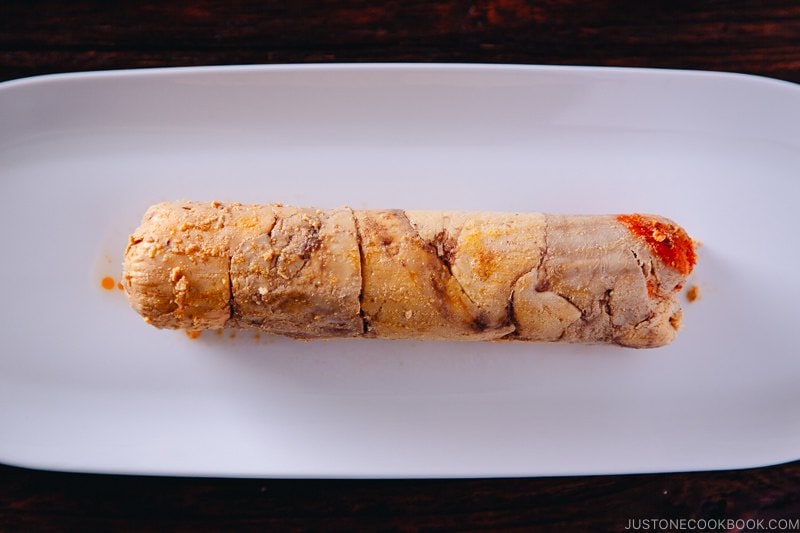
How is Ankimo prepared?
I’ve seen some websites sharing how ankimo is prepared, but it’s not a very pretty scene so I suggest you check it out if you’re really interested.
Here’s the shortened process:
- Remove the liver from the monkfish.
- Rub with salt and rinse with sake.
- Pick the veins.
- Roll into a cylinder.
- Steam.
Ankimo is often served with thinly sliced green onions and momiji oroshi, which is a grated daikon that is seasoned with red chili pepper and drizzled with ponzu sauce.
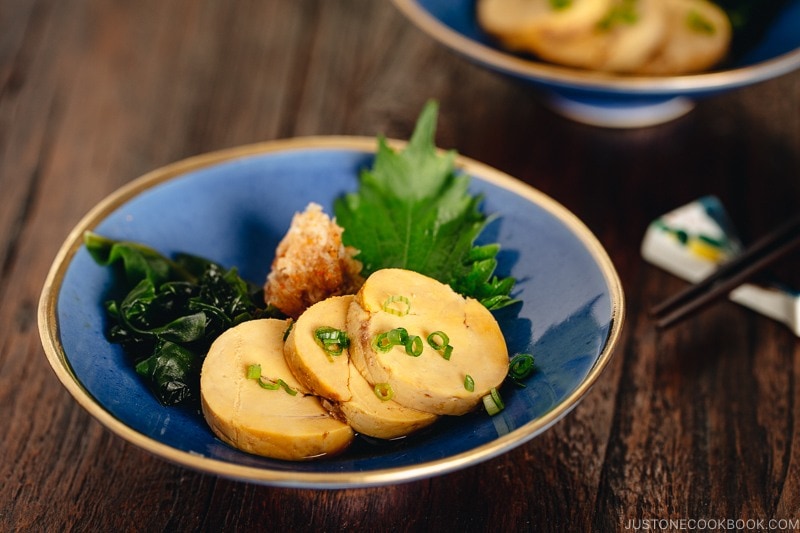
Where to Find Ankimo
Many Japanese restaurants offer ankimo as an appetizer but it’s pretty pricey. They charge upwards of $10+ for 2-3 slices. I thought I should recommend you look for this package at your local Japanese/Korean grocery stores to eat it at home. It’s much more economical and I think many Japanese restaurants get the same one to serve.
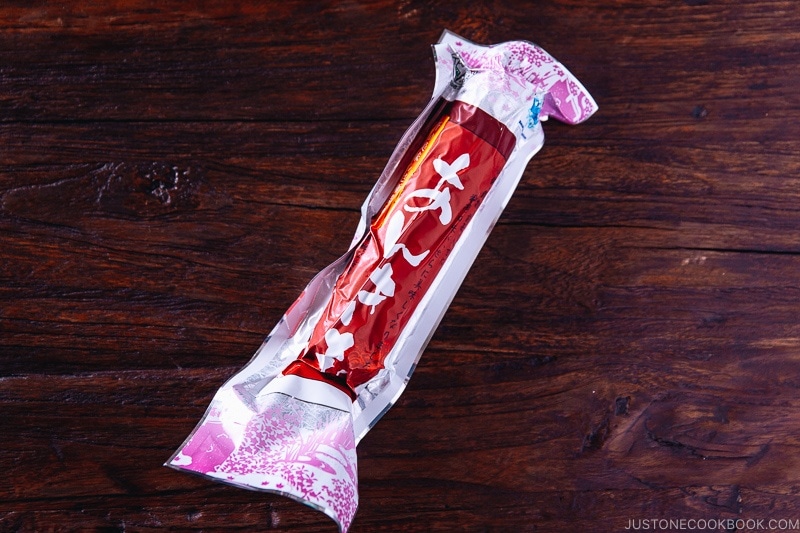
I’ve seen this particular package of ankimo (by Azuma Foods) in the freezer section of both Japanese and Korean grocery stores in the Bay Area (Nijiya in San Mateo and Hankook Supermarket in Sunnyvale. Please comment below if you are able to find packaged ankimo at your local supermarket.).
With the packaged ankimo, making the appetizer dish is really simple and straightforward. You just need to slice it thinly and serve it with wakame, shiso, and grated daikon.
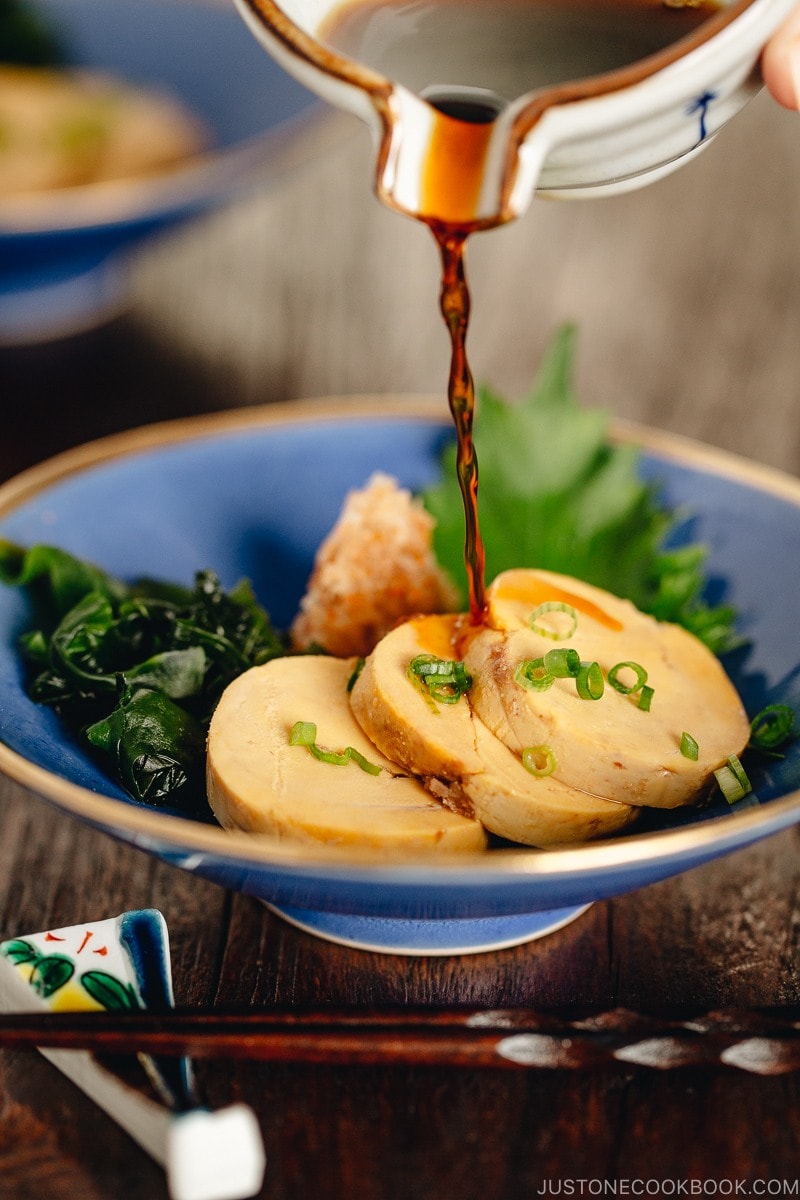
What to Do with Leftover Ankimo
You might only use half of ankimo for an appetizer dish and wonder what to do with the leftover. Well, it is the secret ingredient that I use for our family’s favorite hot pot, Anko Nabe (Monkfish Hot Pot)!
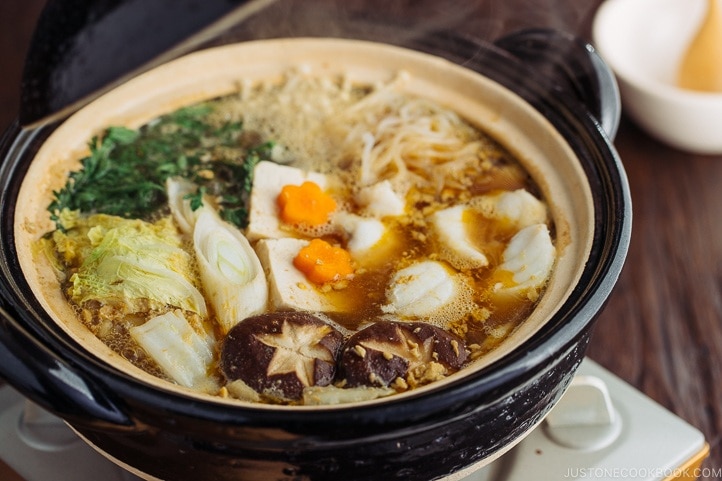
This hot pot is also a delicacy in Japan because monkfish is quite expensive. However, during the winter months, monkfish is pretty affordable in Korean grocery stores. With the addition of ankimo, you’d get an unbeatably rich and flavorful soup broth.
For those of you who appreciate ankimo, definitely look up the ingredient at your local grocery store and make this appetizer at home and save the rest for the best hot pot recipe!
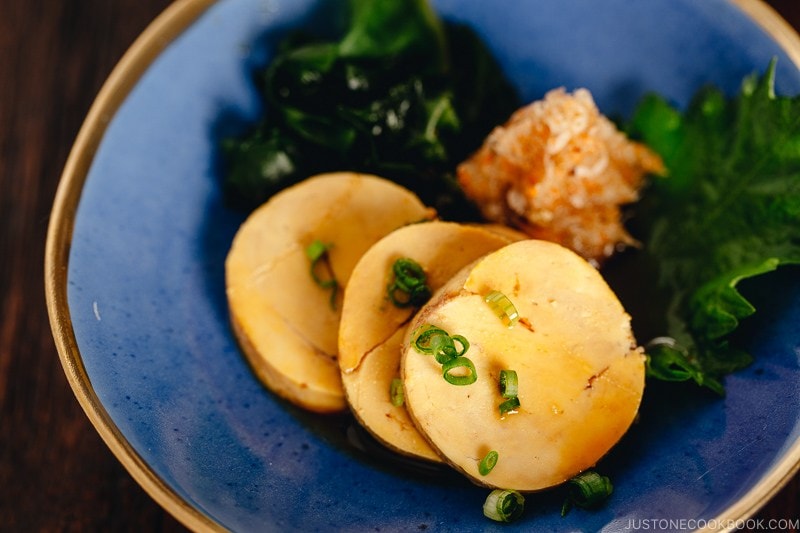
Wish to learn more about Japanese cooking? Sign up for our free newsletter to receive cooking tips & recipe updates! And stay in touch with me on Facebook, Pinterest, YouTube, and Instagram.
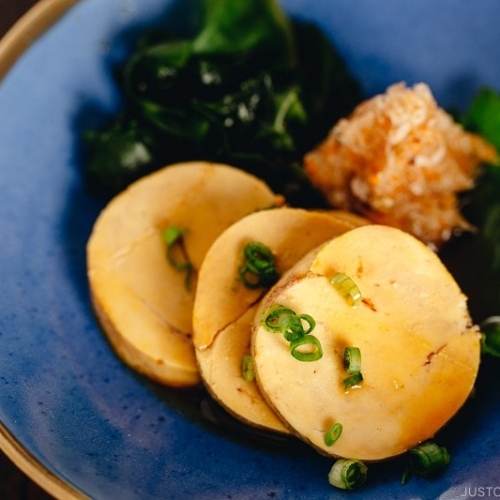
Ankimo
Ingredients
- ½ package ankimo
- 4 shiso leaves (perilla/ooba)
- 1 Tbsp dried wakame seaweed
For the Seasonings
- ponzu
- 1½ inches daikon radish
- ½ tsp ichimi togarashi (Japanese chili pepper)
Instructions
- Gather all the ingredients.

- Soak 1 Tbsp dried wakame seaweed in water for 10 minutes, or until rehydrated.

- Meanwhile, peel and grate 1½ inches daikon radish.

- Gently squeeze out most of the liquid from the grated daikon, leaving some moisture (don’t dry it out completely).

- Add ½ tsp ichimi togarashi (Japanese chili pepper) and mix together.

- Remove ½ package ankimo from the packaging. Thinly slice the ankimo, roughly ¼ inch thick. I served 3 slices per person.

- Serve the ankimo on individual plates. Garnish the plates with the 4 shiso leaves (perilla/ooba), wakame, and grated and seasoned daikon. Drizzle the grated daikon with ponzu. Serve chilled.

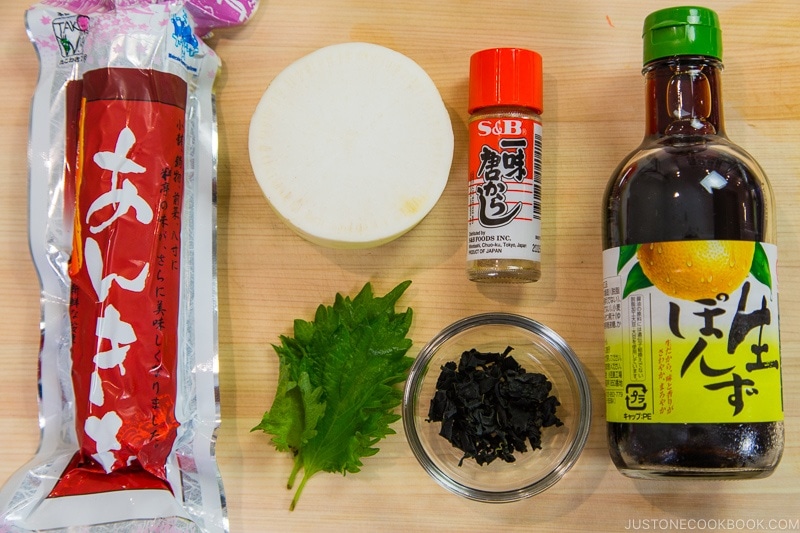
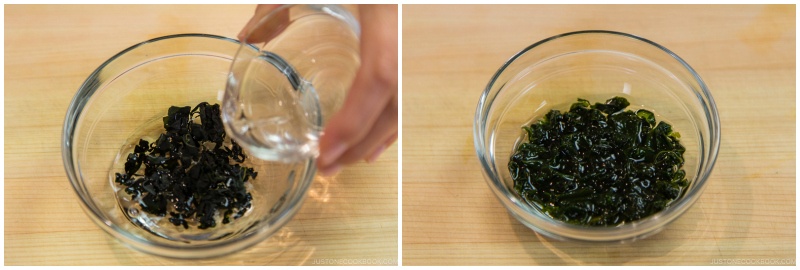
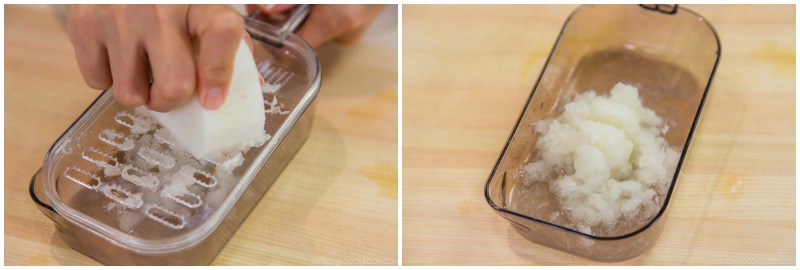
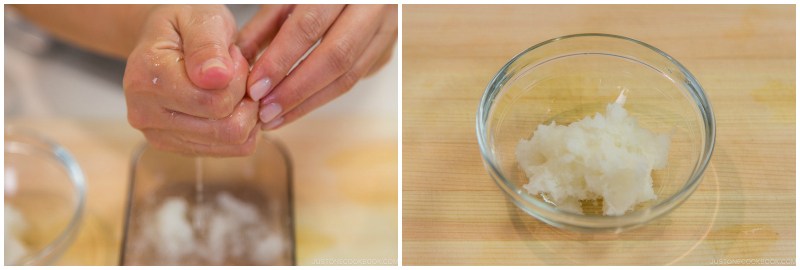
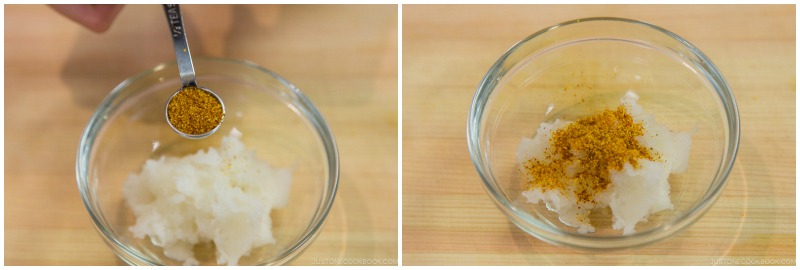
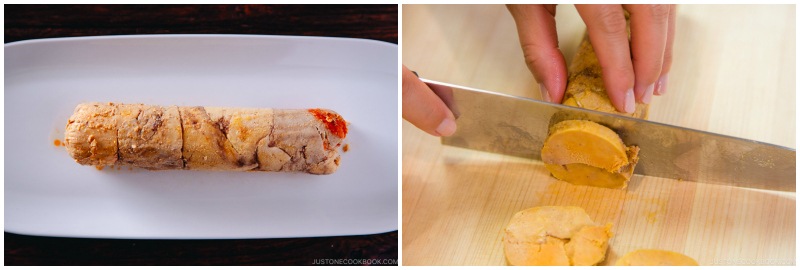
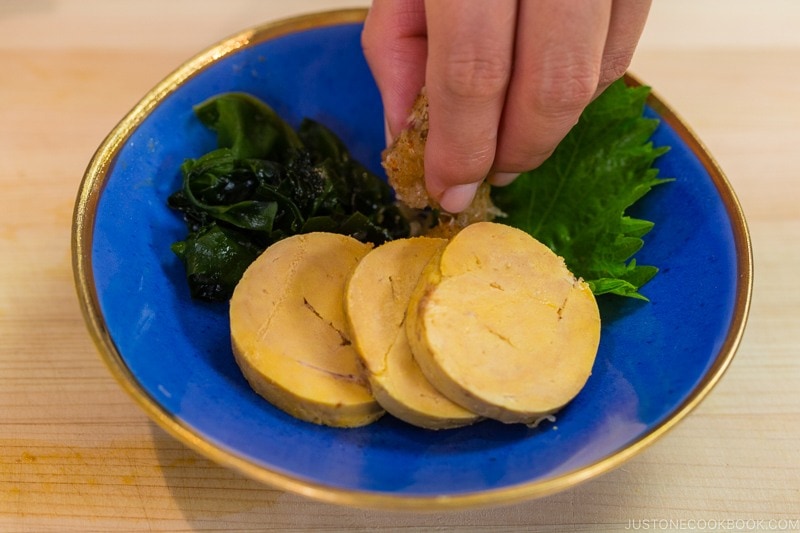










Mitsuwa in San Diego definitely carries it. Frozen section. Heavenly taste!
Hello there! Wow! That’s perfect! Thank you for sharing this.😃 Happy cooking!
i love ankimo! – a couple times I recall being at a Japanese restaurant and they served me what looked like ankimo but much smaller size ‘coins’, and the chef told me it was the liver of a different fish, not monkfish. Any ideas what other fish liver can be used to do a similar dish as ankimo?
Hi Josew! Thank you for reading Nami’s post!
Without looking at the dish, it’s hard to tell what was served at the restaurant, but we think it’s “Cod liver (Tarakimo-鱈肝)”.
You can buy it fresh or canned.
We hope this helps!
I have been making Ankimo for the past year. My wife and I love it. I get the monkfish livers from a local fish monger at a very good price. We do the clean up and steaming it is not difficult. We have learned some tricks to improve the flavor and remove the “fishiness”. I can make 10 rolls for about $30.
Hi Andy! WOW! This is a nice-looking homemade Ankimo!
Thank you very much for sharing your cooking experience and a picture with us.
Hi Namiko,
fyi Suruki Supermarket in San Mateo has ready to eat ankimo at the section in the back, next to deli
Hi E K! Thank you very much for reading Nami’s post and for your input! 😊
My husband and I love ankimo. It’s something we always order when it’s available at izakayas. We also buy ankimo from the supermarket and cook it at home. We fry the ankimo in butter, salt and black pepper.
Hi JD!
Thank you for sharing your cooking experience and tips with us!
I have bought the same packaged ankimo and regretted it. A good portion was freezer burned and the rest was too firm.
Hi Michael! I’m so sorry to hear that. We have bought several Ankimo in the past and we didn’t have any issues… 🙁
[…] Liver (Ankimo) for Monkfish Hot […]